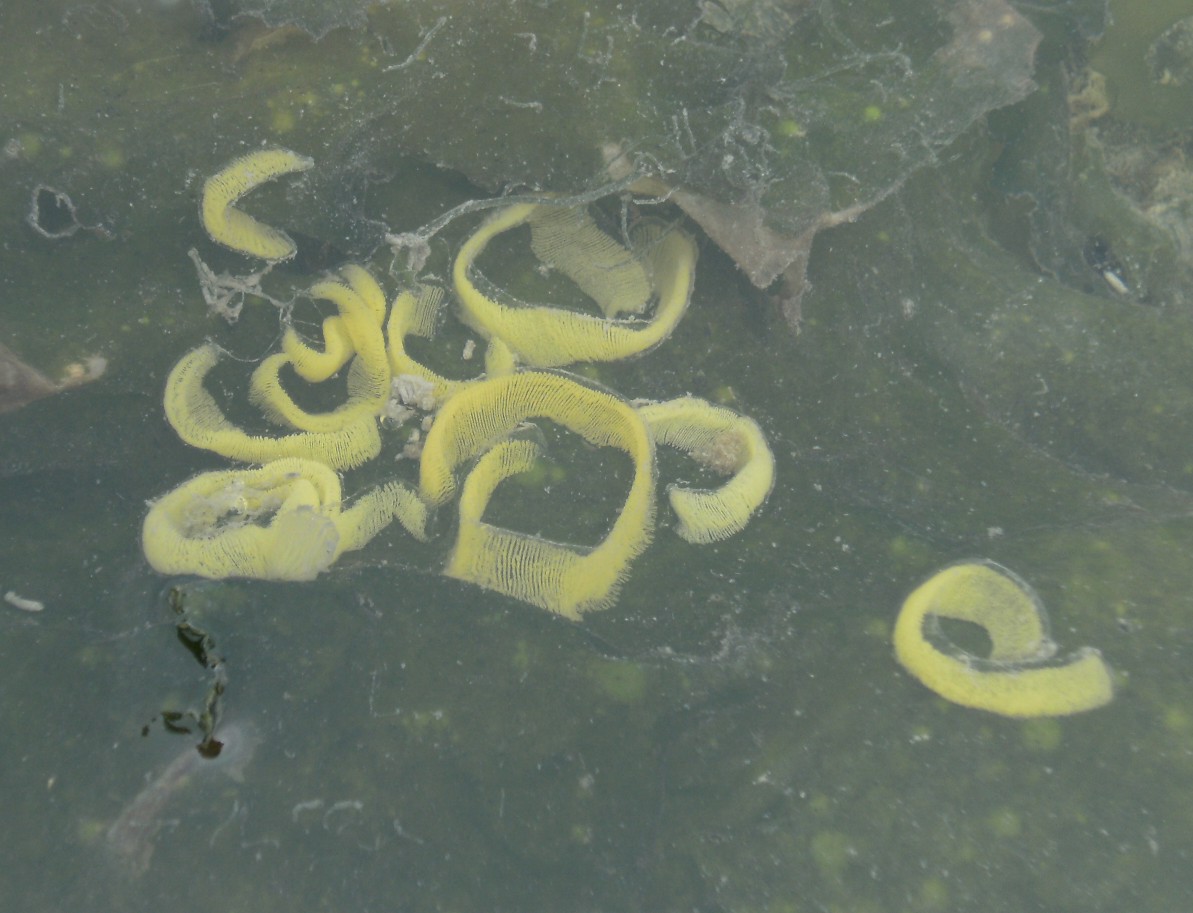Haminoea vesicula (Gould, 1855)White Bubble Snail |
|
|
Synonyms: None
|
 |
|
Class Gastropoda
Family Atyidae
|
|
|
Haminoea vesicula collected
at Padilla Bay,
WA
|
|
|
(Photo by: Robbie Wheeling,
July, 2002)
|
|
Description: Shell usually less than 15mm long. It is whitish or greenish yellow, with sunken spire. Shell too small for entire body to fit in. The shell aperture, at the point where the shell is widest, is less than half the diameter of the shell (photo). Size to 24mm.
Geographical Range: Alaska to Gulf of California
Depth Range: Found intertidally to subtidally
Habitat: Abundant on mud flats and sandy-mud areas of bays, and on boat floats.
Biology/Natural History: This species burrows just below the surface of the sand or mud. Predators include the nudibranch Navanax inermis. Eggs are deposited in a thick, coiled, deep-yellow egg string about 10 mm wide and up to 20 cm long (photo).
General References:
Morris et al., 1980
Scientific Articles:
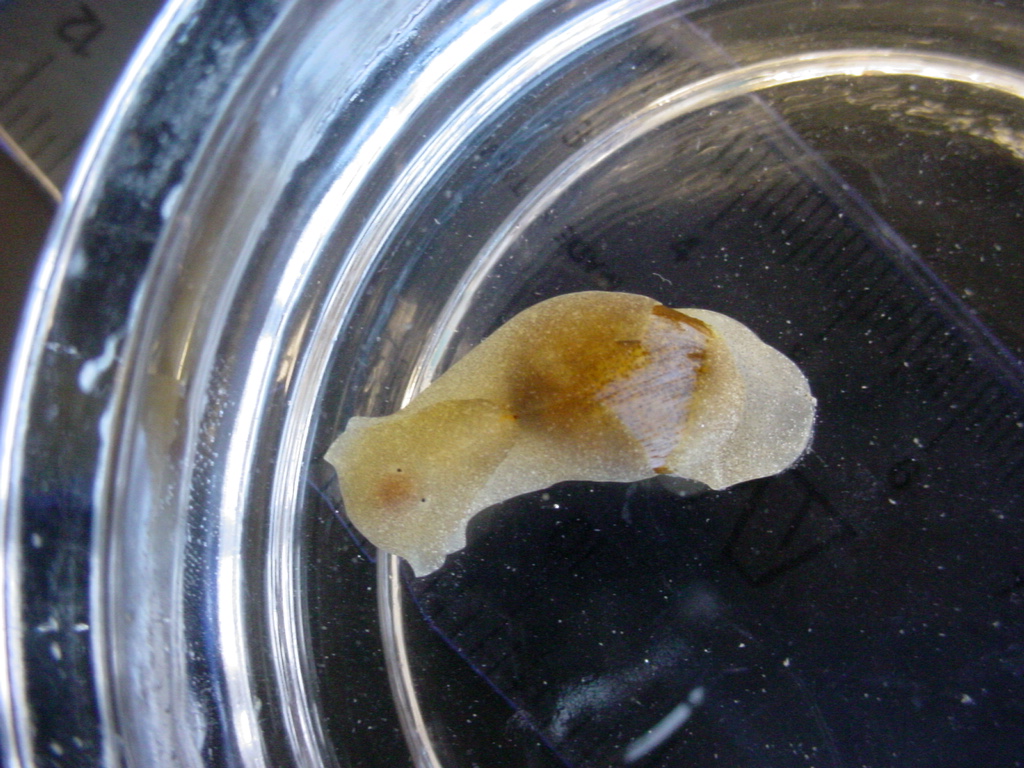
This individual was one of thousands on eelgrass and Ulva in Padilla Bay, July 2005. Photo by Dave Cowles. Scale is millimeters.
Note the partly transparent shell visible through the dorsum.
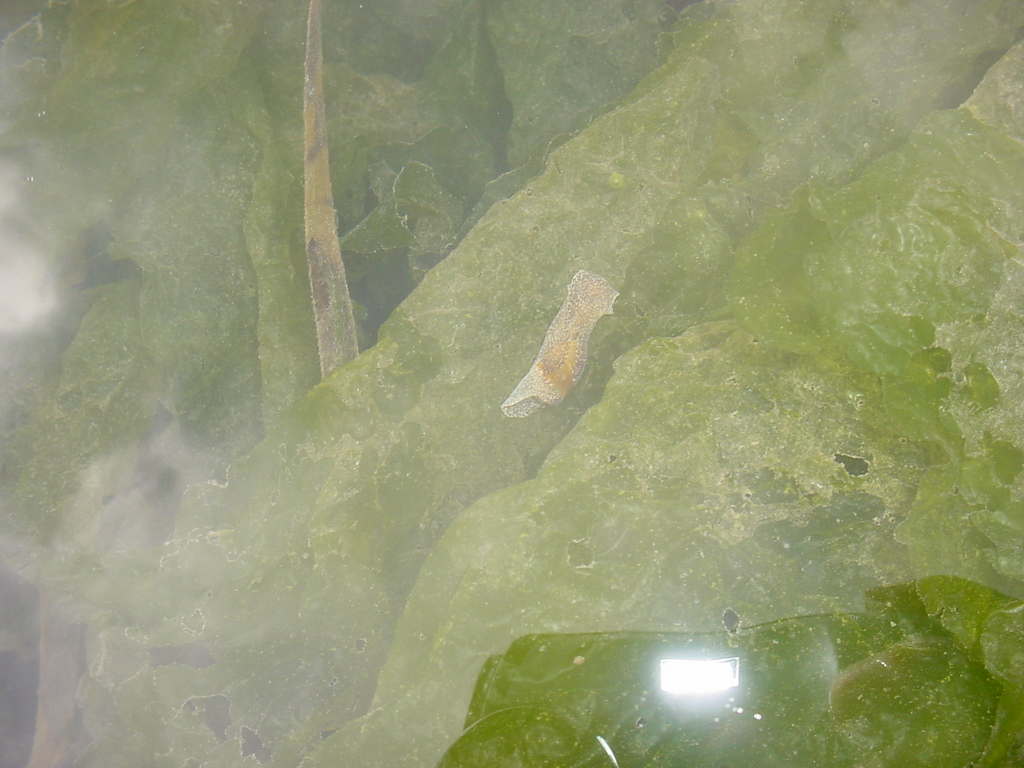
An individual in situ in Padilla Bay. On Ulva.
Photo
by Dave Cowles, July 2005
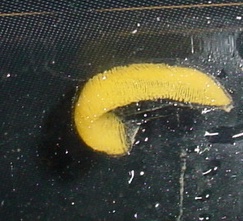
The eggs are yellow and in clusters about 2-3 cm long.
These coils of eggs were photographed in situ in the intertidal at March Point, Padilla Bay, June 21, 2012. The adults and eggs seem to be present at this site only for a fairly short period of time which varies year-by-year. At this time in 2011 almost no bubble shells nor their eggs could be found here. In 2012 they were relatively abundant and easy to find (though not as abundant as in some years).
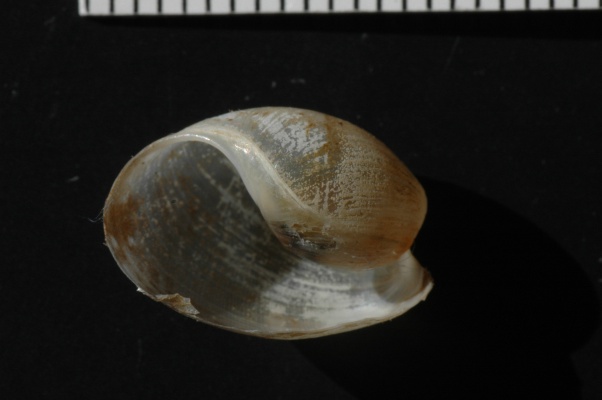
The shell is very light and fragile and around 1.5 cm long (scale is
in millimeters).
The width of the aperture, at the point where the shell is broadest
(near the middle), is just over 1/3 the total shell width.
Photo by Dave Cowles, July 2005
Robbie Wheeling (2002): Created original page
Editors: Dave Cowles 8-2002, 2005
Hans Helmstetler 1-2003
